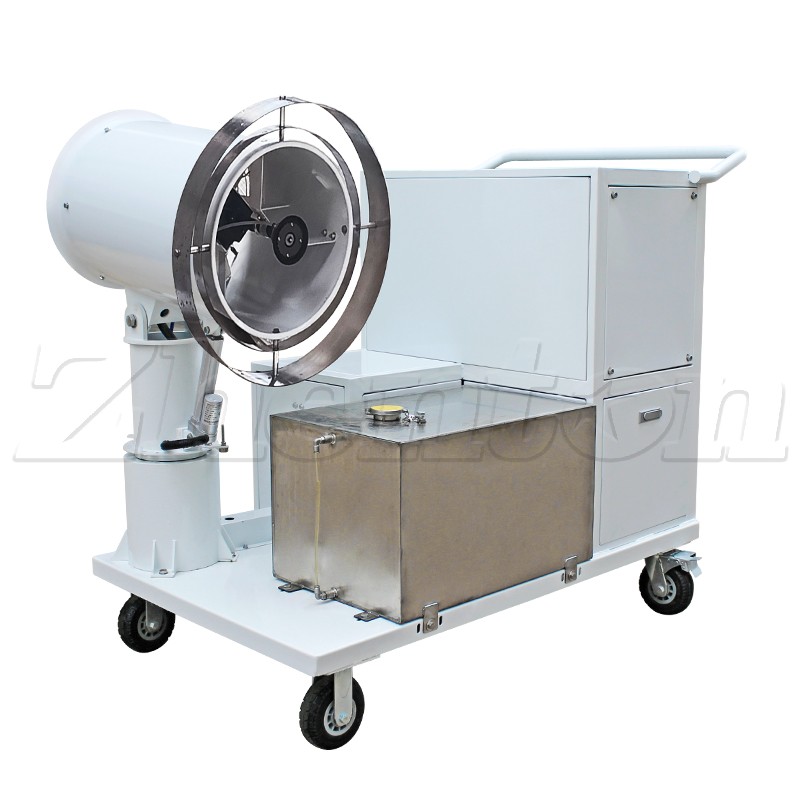
Industrial fog cannons excel in scenarios where traditional dust control methods are ineffective or impractical, offering targeted, efficient solutions that balance performance, safety, and compliance. Let’s explore a real-world application where Industrial fog cannons resolved critical dust issues for a waste treatment facility.
A large municipal waste transfer station, situated just 500 meters from a residential area, faced frequent complaints from residents and scrutiny from environmental authorities. The facility handled over 1,000 tons of waste daily, with dust generated primarily by waste unloading, sorting, and transportation activities.
Large waste trucks entering and exiting the site stirred up thick dust clouds, which drifted into nearby neighborhoods, affecting air quality and residents’ daily lives. Additionally, the sorting process of dry waste (such as paper, plastic, and debris) released fine dust particles that lingered in the air, posing potential health risks to on-site workers.
Traditional dust suppression methods proved unfeasible here. Manual water spraying was inefficient for the 10,000-square-meter facility, leading to uneven coverage and muddy working conditions that hindered waste handling. Fixed sprinkler systems failed to reach dust hotspots like the truck unloading ramps and sorting zones, and excessive water use risked contaminating waste and causing runoff issues—violating the facility’s environmental permits.

To address this, the facility deployed multiple mobile Industrial fog cannons across key areas. The cannons were strategically positioned near the entrance/exit ramps, sorting stations, and waste piles. Equipped with adjustable nozzles and powerful fans, they atomized water into fine mist particles that precisely targeted dust sources.
The fog curtains formed by the cannons trapped dust particles mid-air, weighing them down before they could spread to residential areas or accumulate in the workplace. Unlike traditional methods, the mist didn’t create mud or disrupt operations; instead, it maintained a dry, safe working environment while reducing visible dust by over 90%.
Industrial fog cannons’ mobility allowed operators to reposition them as dust hotspots shifted—such as during peak truck unloading hours or when handling particularly dusty waste. Their low water consumption (60% less than sprinklers) eliminated runoff concerns, ensuring compliance with environmental regulations. Residents’ complaints ceased within a week, and the facility avoided potential fines for dust pollution.

In this scenario, Industrial fog cannons’ flexibility, targeted coverage, and low environmental impact made them far more suitable than traditional measures. They effectively resolved dust issues without disrupting operations, proving their value in complex, high-demand industrial settings.
Contact With Us
If you have any questions please fell free to contact with us.